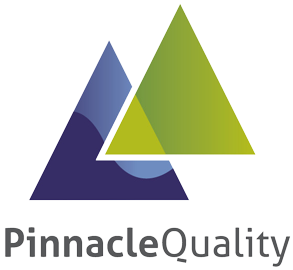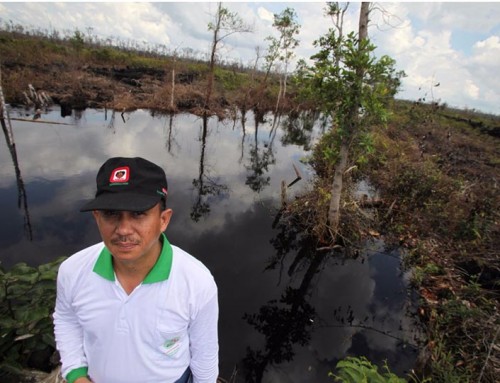 The Second Asia-Pacific Rainforest Summit took place in Brunei Darussalam from the 3rd to the 5th of August 2016. It followed on from the first Summit, which was held in Sydney in November 2014. One of the primary aims of the 2016 event was to build on momentum from the 2015 Paris Agreement that aimed to enhance the United Nations Framework Convention on Climate Change dealing with greenhouse gases emissions mitigation, adaptation and finance.
The Second Asia-Pacific Rainforest Summit took place in Brunei Darussalam from the 3rd to the 5th of August 2016. It followed on from the first Summit, which was held in Sydney in November 2014. One of the primary aims of the 2016 event was to build on momentum from the 2015 Paris Agreement that aimed to enhance the United Nations Framework Convention on Climate Change dealing with greenhouse gases emissions mitigation, adaptation and finance.
The event was largely dominated by governments, NGOs and large local companies. There were some key messages coming through about the challenges and opportunities associated with the sustainable management of the region’s rainforests, and about how deforestation might be better addressed. This summary aims to provide an overview of those messages.
Key message #1: It’s getting harder to be bad
Several new technologies were discussed at the meeting. These included DNA testing, which is actively being used to track deforestation (e.g. http://www.doublehelixtracking.com/news/2016/3/7/plant-dna-evidence-supports-landmark-lacey-act-conviction-of-bigleaf-maple-theft). DNA testing has already resulted in prosecutions for illegal logging. Remote sensing was also discussed. This is being used to track and measure deforestation (e.g. http://www.gfoi.org/).
A significant change from a policy perspective is that the Indonesian government has deemed burning as a method of land clearing illegal. In practice this will mean that major suppliers linked with deforestation will be labelled ‘bad actors’ and the continuity of sustainable supply may be compromised.
Key message #2: The finance sector doesn’t like risk
Speakers from the finance sector had a clear message: climate-led finance policy is not an opportunity or a challenge but an imperative.
However, when it came to how they might become involved in so-called environmental investments another message became clear: the finance sector has no intention of moving away from the classic investment model. This raises the immediate challenge of defining what is an investable opportunity and what is the expected return on investment in this space.
Speakers did not seem to be in the mood to be altruistic about finance nor willing to sacrifice returns simply to be seen to be spending money on environmental investments. The key to ‘invest-ability’, according to speakers from Credit Suisse, was that the growth in the green economy needs to be at the expense of less environmentally friendly investment options. This will ensure that the green economy will make more profit and therefore be more attractive to investors. However, we need to bear in mind that, consistent with traditional investing practices, the finance sector is focused on minimising the risk of their investments. Deforestation is undoubtedly a major risk in investment terms.
In addition, a speaker remarked that, as a percentage of the total invested, the philanthropic sector — charities, foundations, not-for-profit groups and high wealth individuals, for example — does not contribute nearly as much as it once did. There was also a view expressed by some participants that some other forms of funding need to come from the private sector — a private-sector tax, for instance. In addition, private sector investments could be encouraged with the guarantee of government funding incentives.
Key message #3: The marketing landscape is changing
Several business speakers highlighted the fact that the market for sustainably produced deforestation risk commodities (forestry, soy, cattle and palm oil) is growing.
Traditional ‘backstop’ markets such as China are increasingly embracing sustainable commodities. Meanwhile, more advanced countries like Australia are seen as slow adopters of the no deforestatio or sustainability message. Nevertheless, markets like Australia remain attractive because of the relatively high value of the products they buy compared with countries like China and India. Despite this there seems to be an acceptance of sustainable certification from bodies such as FSC and RSPO as being increasingly important.
There was also some conjecture from government and private sector speakers as to what sort of mechanism would incline the market towards no deforestation commitments and sustainable businesses. Mechanisms like taxes or tariff relief for sustainable businesses were discussed. There was a general agreement that there needs to be more barriers to the ‘business as usual’ model. There was also an acceptance that substituting deforestation with some form of green economy at the community level — such as payments for ecological services and ecotourism—was not enough to finance communities at present. Without a better alternative, the current situation, where, for example, there is more profit in clearing trees for plantations or palm oil, will continue.
One of the key features that seemed to be missing from the Summit was pressure from the demand side. There is a growing sentiment that governments would do well to complement on the ground initiatives with work on demand for sustainable commodities. This could include, for example, encouraging and supporting businesses already committed to such policies, and businesses making positive moves — like gaining sustainability certifications for their products.
Public-private partnerships as a solution
Dialogue on the need for greater public-private partnerships continues to gain momentum. It was agreed that one of the key aims for such partnerships is to make local communities part of the solution. To be successful these partnerships will require public and private sector capital. However, both partners will have to abide by strict governance arrangements and both will expect a realistic return on investment.
The role of social impact and green bonds also received significant attention. The fact that these could offer a source of finance for sustainability that did not previously exist is certainly an interesting development.
See: https://www.climatebonds.net/market/explaining-green-bonds
The voice of the supply chain
There was one session that focused on the supply chain. The focus in this session was on excluding deforestation from the supply chain while enhancing
smallholders’ incomes.
Among the key points made in this session were:
Increasing smallholder productivity could increase palm oil yield significantly, thereby reducing the need for further deforestation.
For example, Wilmar is actively working to do this to both improve productivity and build a stable supply base. The company does this by paying smallholders to replant more productive varieties and committing to 25-year supply arrangements with smallholders on the condition that those smallholders are RSPO certified.
There may an opportunity for greater engagement along the supply chain — from grower to consumer — at future meetings
If organisations make no-deforestation commitments this doesn’t necessarily solve the problem of deforestation because of the complexity of the issue on the ground. Such commitments are, however, important.
It was recognised that reducing deforestation will assist in realising the targets associated with the UN’s Sustainable Development Goals (SDGs).
Being proactive can bring real commercial advantage. Some participants feel that if the supply chain is sustainable that may be enough — but they could be missing an opportunity to add value to their brand. The example was given of Kimberly-Clark partnering with FSC and WWF. Through this partnership Kimberly-Clark not only increases the value of its own brands but — thanks to FSC certification and public commitments to sustainable production — increases the value of the entire tissue category.
Further highlights from the meeting can be found on the CIFOR website. See: http://www.cifor.org/asia-pacific-rainforest-summit/
Understanding deforestation risks in your business is a specialist area.
For specialist help, email us now.
Or click here to join our managing deforestation risks cluster group and stay informed.





